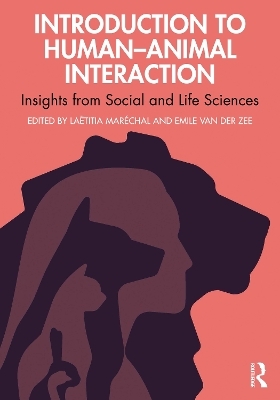
Introduction to Human-Animal Interaction
Routledge (Verlag)
978-1-032-11836-9 (ISBN)
The book starts with the theories and mechanisms supporting our interactions with animals, such as human-animal communication, and it then covers the implications of HAI in terms of ethics and welfare. After discussing cultural differences and forensic aspects in human-animal interaction (e.g., wildlife crime and animal abuse), the book examines evidence in the area of animal-assisted intervention. The final chapters give an overview of current research in specific human-animal interaction systems: human-pet, human-livestock and human-wildlife interaction. The book offers a scientific, evidence-based perspective on human-animal interaction, providing pedagogical tools to make a systematic, critical and constructive evaluation of research in HAI possible. It offers a range of in-text pedagogical features like a subject index, chapter MCQs, open questions, further reading, and additional digital resources including videos which are accessible via QR codes or through the associated website.
This textbook provides the fundamental tools for achieving a comprehensive, current, and critical overview of the HAI field and is an integral text for undergraduate and postgraduate students undertaking modules in human-animal interaction, in social sciences such as anthropology, cultural studies, criminology, ethics and laws or in life sciences such as animal behaviour, conservation and welfare, biology, neuroscience, physiology, psychology, public health and those studying veterinary science.
Dr. Laëtitia Maréchal: Associate Professor in Psychology at the University of Lincoln (UK), with a multidisciplinary background from the social and life sciences, including Psychology, Ethology, Endocrinology, Socio-Ecology, Primatology and Social Anthropology. Her research applies a One Health/One Welfare approach to better understand interspecific interactions. She is also a member of the International Union for the Conservation of Nature (IUCN) Primate Specialist Group Section for Human-Primate Interactions. Dr. Emile van der Zee: Associate Professor in Psychology at the University of Lincoln (UK). He has published numerous books on language and published several articles and book chapters related to animal communication. He designed a popular course on the Psychology of Human-Animal Interaction, which inspired this book.
1. An Introduction to Human–Animal Interaction, Book Content and Considerations 2. Theories in Human–Animal Interaction 3. Human–Animal Communication 4. Bioethics and Human–Animal Interaction 5. Human–Animal Welfare: The Interconnectedness of Human Well-Being and Animal Welfare 6. Cross-Cultural Variation in Human–Animal Interaction 7. Criminal Issues in Human–Animal Interaction 8. Animal-Assisted Intervention and Professional Practice 9. Human–Pet Interaction 10. Human–Livestock Interaction 11. Human–Wildlife Interaction Multiple Choice Questions: The Answers! Going the Extra Mile ...
| Erscheinungsdatum | 31.01.2024 |
|---|---|
| Zusatzinfo | 36 Illustrations, color; 10 Illustrations, black and white |
| Verlagsort | London |
| Sprache | englisch |
| Maße | 178 x 254 mm |
| Gewicht | 412 g |
| Themenwelt | Medizin / Pharmazie ► Medizinische Fachgebiete ► Psychiatrie / Psychotherapie |
| Naturwissenschaften ► Biologie ► Zoologie | |
| Sozialwissenschaften ► Soziologie | |
| ISBN-10 | 1-032-11836-9 / 1032118369 |
| ISBN-13 | 978-1-032-11836-9 / 9781032118369 |
| Zustand | Neuware |
| Haben Sie eine Frage zum Produkt? |
aus dem Bereich


